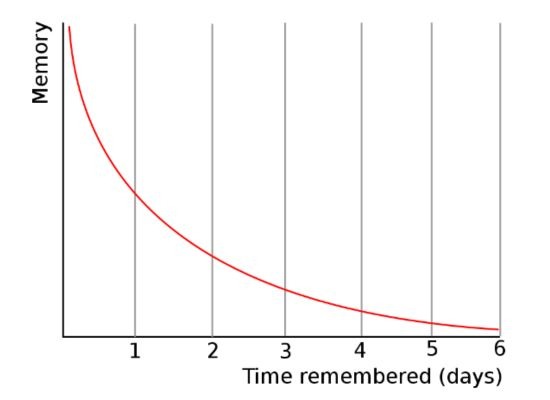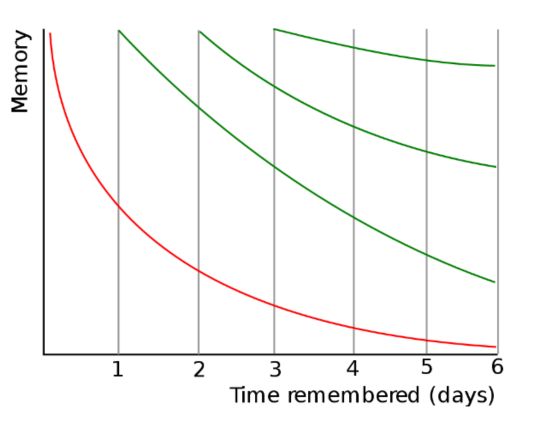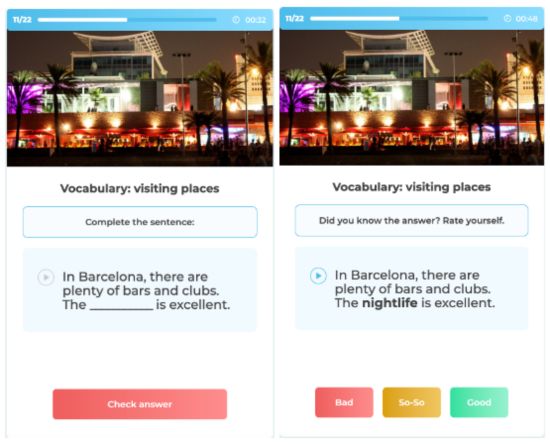
[ad_1]
This visitor article was written by Nestor Kiourtzidis, Co-Founding father of Linguahouse, a number one supplier of educating sources for ESL/EFL lecturers. Linguahouse offers sources and instruments for ESL lecturers, college students, and language faculties, with worksheets and lesson plans for younger learners by way of adults and the Expemo app, accessible on telephones, tablets, and computer systems.
A key problem for ESL learners is the flexibility to recall newly discovered phrases, phrases, and constructions. One efficient methodology that has gained traction lately is spaced repetition. This system entails reviewing info at rising intervals over time to bolster reminiscence retention. On this submit, we are going to dive deeper into the science behind the tactic and discover if and the way educators can apply the method to conventional ESL programs.
What’s spaced repetition?
Spaced repetition is rooted within the mind’s means to strengthen recollections by way of repetition over time. Once we first encounter new info, it will get saved in our short-term reminiscence. Nevertheless, with out reinforcement, this info is liable to fading away rapidly. The speed at which new info is forgotten over time when there isn’t any try and retain or reinforce it may be plotted as a curve often known as the “forgetting curve.”

Spaced repetition interrupts this predictable means of forgetting by scheduling evaluations at strategic intervals, reinforcing retention and shifting the knowledge into long-term reminiscence.
These intervals are decided by algorithms or schedules based mostly on the learner’s efficiency in recalling the knowledge. If a learner efficiently remembers a phrase or idea, the subsequent assessment happens after an extended interval. Conversely, if the learner struggles to recall, the interval shortens, making certain extra frequent evaluations till retention is achieved.

How is spaced repetition useful to ESL college students?
Spaced repetition helps with the rote memorization side of studying. By encountering language objects at optimum intervals, ESL college students can recall vocabulary and constructions extra effectively and for extra prolonged durations. As a substitute of cramming an enormous quantity of knowledge directly, spaced repetition permits college students to assessment smaller parts persistently, main to raised long-term outcomes.
Can lecturers apply spaced repetition rules to the ESL classroom?
Regardless of its confirmed advantages and scientific efficacy, spaced repetition isn’t actually a sensible method that lecturers can make the most of within the classroom to recycle materials. This is because of a number of points:
Personalization
By its nature, spaced repetition is a personalised studying methodology. Every scholar learns at their very own tempo, with the algorithm adapting the repetition intervals to the person learner’s means to recollect the fabric. The method, due to this fact, can’t be utilized to a classroom of scholars every with their very own strengths and weaknesses.
Algorithm
Spaced repetition makes use of subtle algorithms to schedule evaluations. With out a pc software, lecturers received’t be capable of effectively plan evaluations of particular person language objects. Furthermore, spaced repetition depends on quick, common assessment classes (ideally day by day or a number of instances every week) versus rare cramming. If you happen to’re educating a category or a person scholar on a weekly foundation, objects which are scheduled for assessment on completely different days of the week must be postponed to the subsequent weekly lesson. This might end in a much less environment friendly studying course of.
Practicality
Phrases, phrases, and constructions should be reviewed in a considerate method. Take a easy noun like ‘canine.’ In a multilingual classroom, the instructor might show an image and ask college students to recall the phrase. Nevertheless, a extra advanced language merchandise akin to a phrasal verb, grammatical construction, or practical expression would require a extra artistic method.
Listed here are just a few examples of job varieties that might be used to assessment such language phrases:
- A gapped sentence: I have to ____ up some presents for Christmas tomorrow. (ANSWER: wrap up)
- A gapped mini dialogue: Are____? / Sure, I’ll have the mushroom soup. (ANSWER: Are you able to order?)
- An outline of a scenario: What do you say in the beginning of a enterprise assembly to begin speaking about the primary subject? Let’s ____. (ANSWER: Let’s get right down to enterprise.)
With a purpose to assessment the goal language from every lesson in a sensible method and with out relying on translation, the instructor would want to organize quite a lot of question-and-answer duties, which might develop into time-consuming and impractical.
So, how can spaced repetition be used to reinforce a standard language course?
Spaced repetition can be utilized as a element of a blended studying system, involving conventional classes with a instructor and quick, common evaluations exterior the classroom to bolster what’s discovered within the classroom.
To assessment the classroom materials, college students can use quite a lot of commercially accessible flashcard apps which are powered by spaced repetition algorithms. These apps usually work within the following method:
- The app shows the query a part of the flashcard.
- The learner tries to recall the reply.
- The app reveals the proper reply.
- The app schedules the flashcard for future assessment based mostly on the learner’s means to recall the reply.
In terms of truly creating the flashcards, there are two choices:
1. College students create their very own flashcards.
Numerous apps enable learners to create their very own flashcards. Examples of those embrace Anki and Quizlet. These apps assist multimedia options, permitting customers to include audio and pictures into their flashcards.
Advantages
- Personalization – College students can embrace useful private hints, mnemonic pictures, translation, and many others. within the query a part of the flashcard.
- Further reinforcement – The act of making flashcards additionally serves to additional reinforce retention of the fabric.
- Selectivity and adaptability – College students can choose solely tough or unfamiliar language components for assessment. They’ll additionally create flashcards for added objects exterior of the goal language of the lesson (e.g., extra phrases that arose throughout a dialogue).
Drawbacks
- Time-consuming – Creating flashcards is a time-consuming course of, particularly if learners are including extra components akin to pictures to assist improve retention.
- Errors – College students are susceptible to creating errors throughout the flashcard creation course of (though in one-to-one lessons, they may make a behavior of checking their flashcards with their instructor).
- SImplicity –College students could lack creativity of their method to designing flashcards and resort to easy translations. If a learner is ready to recall a selected language merchandise from its translation or definition, with out the context of a sentence, dialogue, or scenario, they could battle to make use of it in observe.
- Motivation stage – College students should be extremely motivated and disciplined to persistently create their very own flashcards after each classroom lesson.
2. College students use pre-designed flashcards.
Whereas creating their very own flashcards could also be ideally suited for some college students, a blended studying system that includes pre-designed units of flashcards for college kids could attraction to a wider vary of learners. An instance of such a system is Linguahouse’s ESL worksheets and proprietary flashcard app, Expemo. Every worksheet comes with a set of flashcards based mostly on the goal language, which the scholars can later entry and assessment with Expemo by scanning a QR code.


Advantages
- Practicality – Because the flashcards are already pre-designed by language consultants, busy college students don’t have to spend time creating their very own content material.
- Accuracy – Flashcards designed by lecturers and language consultants usually tend to be freed from errors.
- Design – Professionally designed flashcards can function inventory pictures, high-quality audio, and different artistic design components. College students would want to speculate money and time to realize the identical outcome.
- Motivation stage – College students can immediately entry the flashcards on their cellular units or computer systems. This reduces the extent of required motivation and energy related to creating and reviewing their very own materials.
Drawbacks
- Lack of personalization – Because the flashcards are pre-designed for common use, they will’t be personalised by the scholars (though superior app options might enable learners so as to add their very own private hints and translations to particular person flashcards).
- Fastened set of flashcards – College students can solely assessment the worksheet materials. They received’t be capable of assessment any extra language objects from their classes with out creating their very own flashcards.
- Lack of preliminary retention enhance – College students received’t profit from the additional retention enhance that comes with creating their very own flashcards.
In conclusion, spaced repetition has the potential to be a secret weapon for ESL college students who persistently embrace the expertise. Its means to reinforce recall, optimize studying effectivity, and foster long-term retention makes it a beneficial studying assist instrument. By strategically incorporating spaced repetition right into a blended studying system, educators can considerably contribute to college students’ proficiency and confidence in mastering the English language. For extra articles on this subject, take a look at our weblog.

As co-founder of Linguahouse.com, Nestor has been concerned within the creation and administration of on-line sources for language lecturers and learners, in addition to the event of Expemo, Linguahouse’s flashcard software that makes use of spaced-repetition algorithms to reinforce language retention.
[ad_2]